
22 minute read
Food & drink
SHROPSHIRE’S SLOW FOOD ODYSSEY
CONTINUING HIS ODYSSEY EXPLORING THE BOUNTY OF THIS GREAT COUNTY, THIS MONTH ED THOMAS MEETS CHEF, EDUCATOR AND FOOD CONSULTANT STEVE GUY
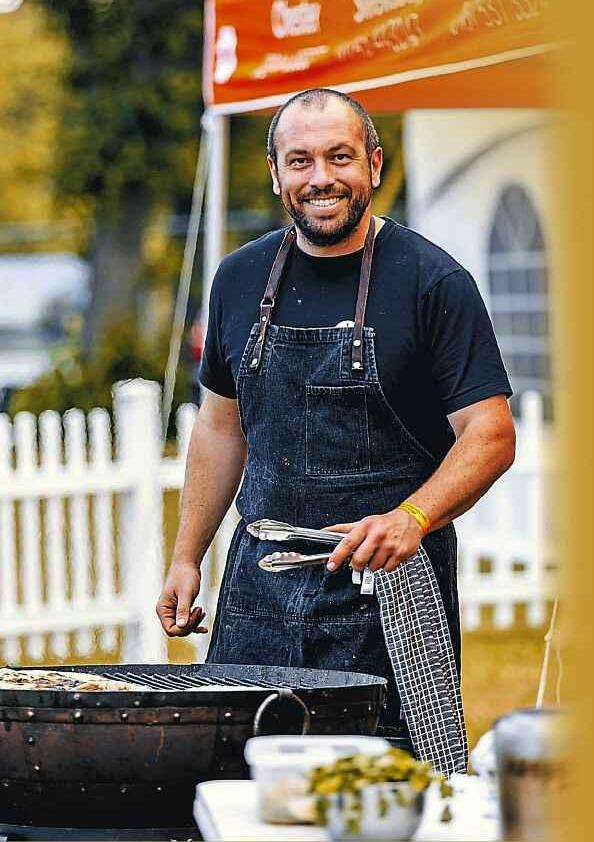
ANT STEVE
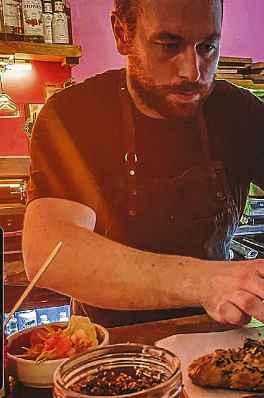

Steve Guy, aka The Hungry Guy.
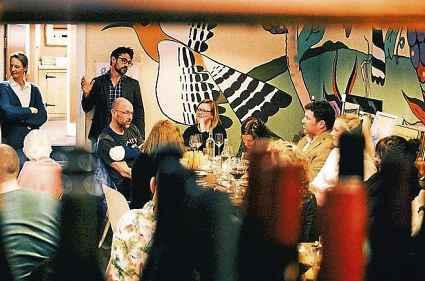
Some of the Slow Food events. To say food is Steve’s passion would be an understatement. Except maybe it is. Where Steve’s love of food really comes to the fore is when he starts cooking and communicating.
Steve Guy, aka The Hungry Guy, explained to me that for him helping to explain to people where their food comes from is so important. He went on to say that industrialised factory farming is bad for the environment and bad for what ends up on your plate.
Steve is on a mission to inspire school children, and anyone else who will listen, about what is on their plate. He also wants it to taste great, benefit local producers and the environment.
In Shropshire, we’re surrounded by ood and farming, so why do we still need o think about where our food comes rom?
Well, Steve explained that during one f his education sessions this summer, where young school children dig for egetables, there was a child who had to sk what a potato was. A humble potato. This spurred The Hungry Guy on.
Steve works as a private chef, cooking or parties in their own homes or for orporate events. He also works with chools and local authorities to inspire
children to becom more involved wit and to understand their food. He offe t a sensory experience c and wants children to get familiar with what it is they actually eat. These sessions e include Guy’s Grocery Workshops, as e well as pasta making and fermentation f sessions where you can create your own t fizzy drinks. f He is also closely involved in the e Slow Food movement. As a committee member of the local Ludlow and the c Marches branch of Slow Food, he teams a up with passionate producers and other i like-minded connoisseurs to celebrate a good food and local artisan producers through a better understanding of taste, fo quality and production. to Founded in Italy in 1989, globally the fr Slow Food movement envisions a world in which all people can access and enjoy of food that is good for them, good for those w who grow it and good for the planet. With ve the current state of emergency this is now as an ever more pressing issue. T One of Steve’s numerous collaborations is with Havenhills Field fo and Kitchen near Shifnal where Steve co develops their weekly menus. Steve sc explained that his role at Havenhills and




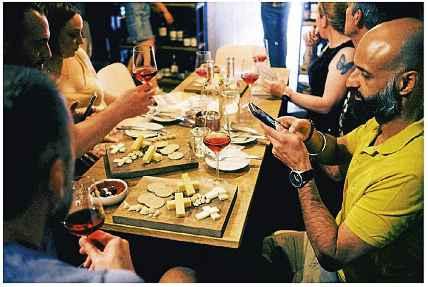

e h ers
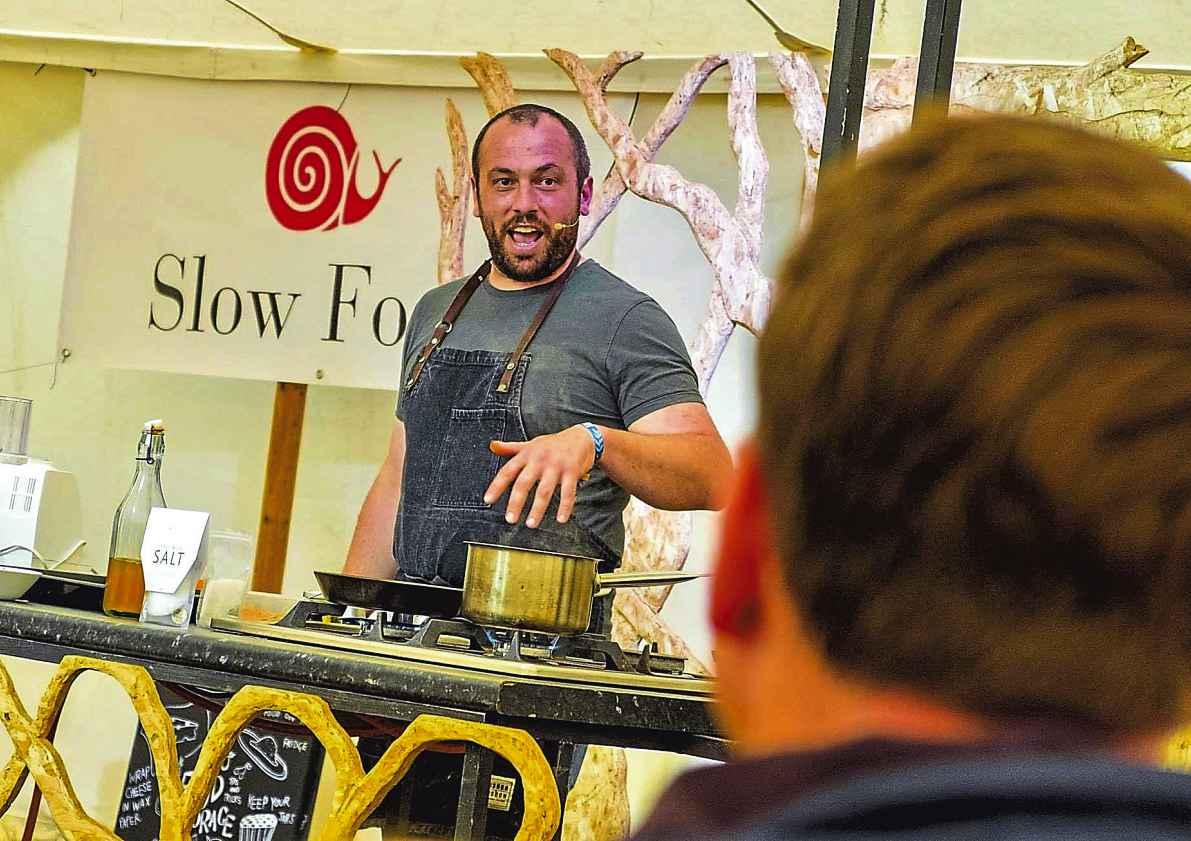

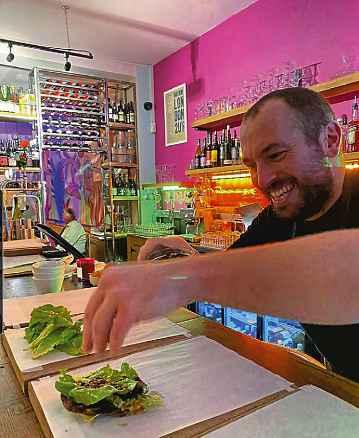

the h ir ethos is to create weekly menus based b on their uber local vegetables and a other ingredients. Everything comes c from within a five-mile radius r di and they partner with other local producers such as Greenacres who grow 15 types of wheat. Steve explained that wheat isn’t just wheat, different varieties have different properties meaning they’re good for different things. It’s a bit like grapes used in wine, they all offer something a little different.
He is also collaborating with Fordhall Farm, the organic farm near Market Drayton, on various community and education projects.
This season Steve is leading a food waste project in Shrewsbury. In an effort to cut down on waste, Steve and plenty of willing volunteers are turning 2,000 trays of unused vegetables into soup. The soup is then frozen and used for four months’ worth of meals for local charities. Anyone wishing to get involved should find The Hungry Guy on Facebook or Instagram and drop Steve a line.
There are so many producers that Steve works with and is inspired by. His ethos, and that of Slow Food, has a large dollop of local business collaboration mixed in. Some of the other like-minded producers includes the likes of Shropshire Microfarm, Great Berwick Organics d and Strawberry Fields Farm.
The Shropshire Microfarm grows and supplies micro herbs and other micr crops to many leading chefs, including Steve. They are all grown sustainably in Shrewsbury and can be delivered straight to your door – wonderful additions to any dish.
At Great Berwick Organics, which is also near Shrewsbury, they breed and nurture Longhorn cattle. The cattle spend their whole life on the farm before being butchered and sold directly to consumers and restaurants.
Strawberry Fields Farm also produces high quality meat on the family farm; lamb and pork, as well as beef, which is all available from their own farm shop near Dorrington.
But perhaps the ‘coming soon’ producer that Steve is most excited about is Noosh – his own range of hot sauces that will launching soon. In time, other tables sauces will be added to the range, but for now hot sauce fans should look out for these sauces clad in their brightly coloured branding. The sauces are made in small batches using seasonal local produce that is being sustainably grown. Due to the seasonal nature of the sauces they will only be available for limited o t
periods to ensure longevity of certain ingredients. With chillies for example, essential for hot sauces of course, the trick is to ferment them. Using this traditional preserving method ensures supply when out of season.
Steve is challenging himself to ensure that everything inside the bottle is from Shropshire. I know I am looking forward to seeing them on a shop shelf soon and to trying them out.
You will be able to catch The Hungry Guy at various food festivals and other food events throughout 2023.


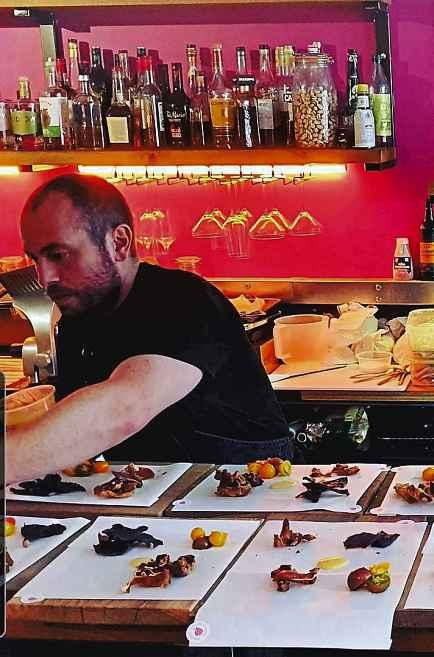
SHOP LOCAL FOR THE BEST LOCAL FOODS
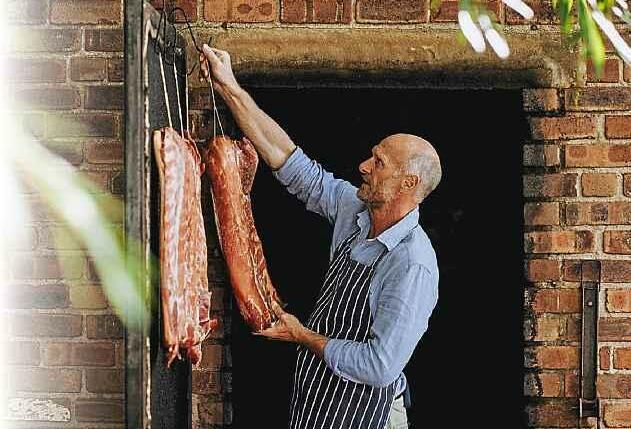
There’s never been a better time to be shopping locally. Not only are you getting a more artisan product with more taste, supporting the local economy and providing jobs, but it also may be a surprise to see how competitive prices are.
Staff at Maynards have even spotted a few lines where their shop is cheaper than the big store equivalent. It’s a safe way to shop too, as small independents are usually quieter and you are served by a familiar friendly face who knows you and what you are interested in buying. If you are lucky enough to live near a farm shop, there is the added benefit of low petrol and mileage too which helps not only your pockets but also the environment – every little helps.
At Maynards, we are very proud to stock some fabulous local suppliers. Our beef and lamb comes from the Welsh border from small farms, Applebys amazing cheese comes from just across the fields, Mr Moydens delicious cheeses are from a few miles away, Shropshire Salumi from rare breed pigs sourced within two miles from where it’s produced, a range of local artisan ales and and the best sourdough from our artisan baker here in north Shropshire.
Our own bacons, hams and sausages are made from pigs locally reared under the red tractor accreditation, using old fashioned recipes and methods. Our bacons are matured for up to four weeks and smoked over local oak chippings. Much of our bacon is distributed by the milkmen of southern England to the doorsteps of the south and our sausages can be enjoyed throughout the nation in any of the nine excellent Dishoom Irani style cafe/restaurants as well. The best breakfast you can buy in our opinion and the restaurant group donates a meal to a child in India for every meal they serve.
Look out for the January sales too in our shop – there will be bargains to be had.
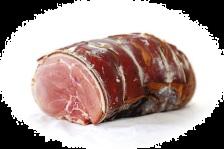
HOME PRODUCED
AWARD WINNING SAUSAGES AND BACON
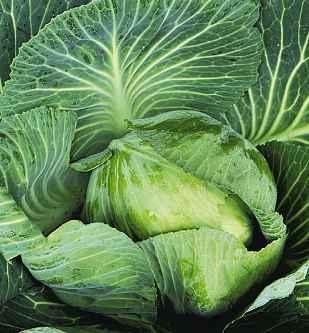
Locally reared beef and lamb, pork pies, pates, cheeses, fresh bread, fruit and veg ALSO Alternative Meats Rosè veal, wagu beef, mangalitza pork and game. And much more Order by phone, email or better still visit us and have a browse. Bring this advert with you and enjoy a free cappuccino.
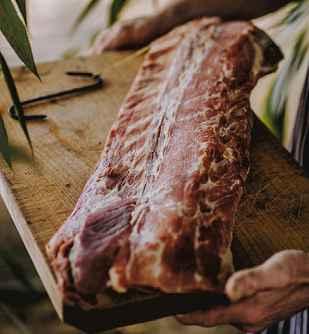
Gourmet Burger Van available to hire. Check out our website for details.
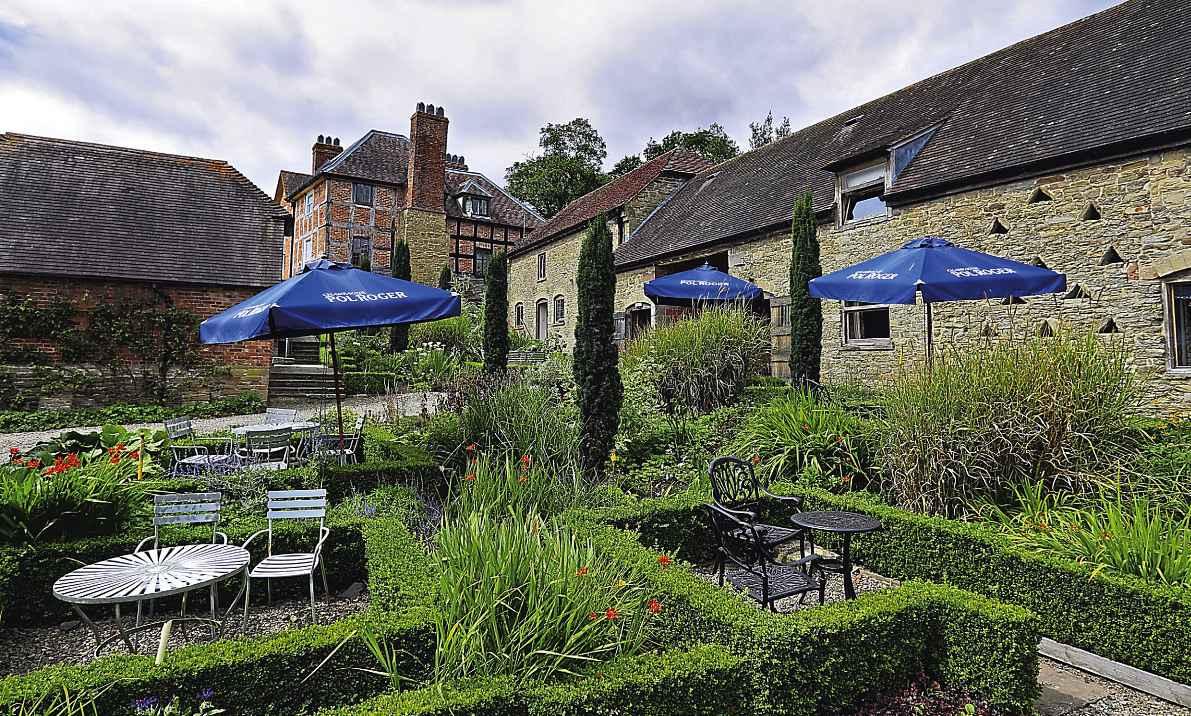
DISHING OUT STRENGTH AMID THE CHALLENGES
AS THE NEW YEAR ROLLS IN, ANDY RICHARDSON LOOKS AT SOME OF THE REGION’S FINEST PUBS AND RESTAURANTS AS THEY EMERGE FROM TWO YEARS OF UNCERTAINTY
The new year is a time of renewal. It’s a time for positivity, for embracing new challenges and for setting in motion ambitious new plans. It’s also a time for reflection – and Shropshire restaurants have more reasons to reflect than most.
Recent years have been tough. And while many had hoped for a post-Covid bounce, the reality is that most face a long hard road. There have been restaurant closures and take-overs in recent times. More are likely as owners get to grips with the huge increase in energy costs, the rise in wages, the increase in ingredient prices and the fact that customers have less disposable income to spend on hospitality.
The industry is subject to the whims of politicians and the wind of change
Willem and Pippa Vlok, owners of the successful Old Downton Lodge, pictured above.
more than ever before. Brexit has brought about staff shortages, particularly at some of the county’s better restaurants, which had previously relied on an influx of talented young staff from France, Spain, Italy and beyond.
Local restaurants are in a state of flux and need the support of customers more than ever if they are to survive the storm clouds that have gathered.
January is, of course, the cruellest month and while many have made merry over the Christmas holidays, it’s now a time to tighten belts and bank on the support of regulars.
Yet for all of the challenges, Shropshire retains a strong restaurant sector. It might no longer have the glitz and glamour of Michelin-era Ludlow –that all seems like a long time ago, now – but there are enterprising new owners, chefs pushing for higher standards and entrepreneurs willing to invest in new ventures. During the past year, most restaurants made a welcome return
Melanie and Martin Board at The Bear at Hodnet. following the commercial horror that was Covid and while conditions remain extremely tough, there is optimism that the road ahead will gradually ease.
A number of notable owners made great progress in 2022 and can look forward to building on hard-earned reputations in the coming year.
Mel and Martin Board cook with three AA Rosettes at The Haughmond, on the outskirts of Shrewsbury, which has developed into one of the region’s best restaurants. They have owned The Haughmond since April 2014 and their vision has always been to offer
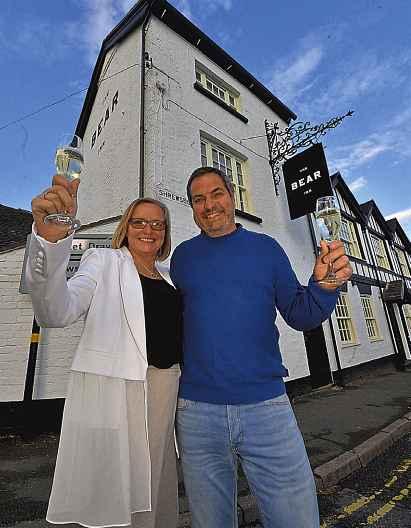
Melanie and Martin at The Haughmond in Upton Magna, Shrewsbury.
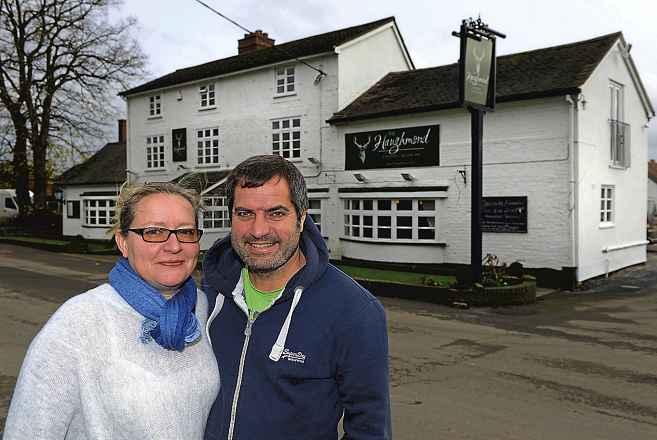
Three of CSONS – Reuben, Josh and Adam Crouch; inset, the CSONS burger. the best dining and guest experience in Shropshire.
Their life together started in Hong Kong, where they married. On their return to the UK, they started their first business in Ironbridge, with a wine bar in 2002. Mel was also juggling a full-time marketing job in London, commuting back and forth each week. They had great success which led them to move premises to The Plough, at Allscott in 2004.
In addition to The Plough, they also ran a B&B at Wrockwardine, a beautiful countryside location offering a generous full English breakfast. Attention was now given to starting Basil’s Restaurant - named after their beloved Staffordshire Bull Terrier. The menu focused on Shropshire produce and Martin’s vision. In 2012, Martin achieved his first AA rosette for his food, a marker of success for a self-taught chef.
Since 2014, they’ve made great strides at The Haugmond while in 2020 they took on a new project as operations managers of The Bear Inn, at Hodnet.
Owned by the Hodnet Estate, Mel and Martin were involved from day one, and saw what was once an empty pub turn into a modern inn that is now a nationwide destination.
Another set of enterprising owners are CSons – four brothers, from the south Shropshire countryside, who share the surname Crouch. Their original restaurant, in Shrewsbury, is a longstanding favourite. The brothers have built upon that success by opening a branch at Ludlow’s Dinham Weir, which is arguably the best café/bistro in the county. A further opening followed this year with Sourced, a pizza bar, in Ludlow, which prides itself on the use of great ingredients.
Reuben Crouch, one of the four Crouch brothers, said there were plans for further expansion, when the time is right.

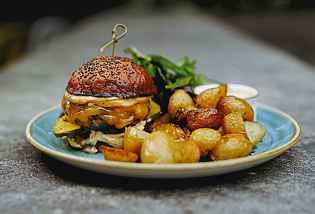
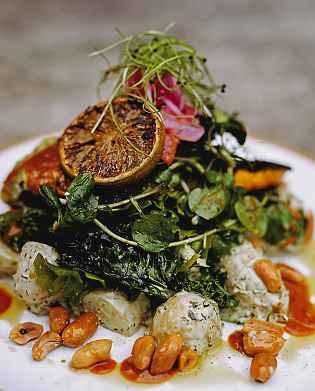
CSONS’ Chirk Trout.
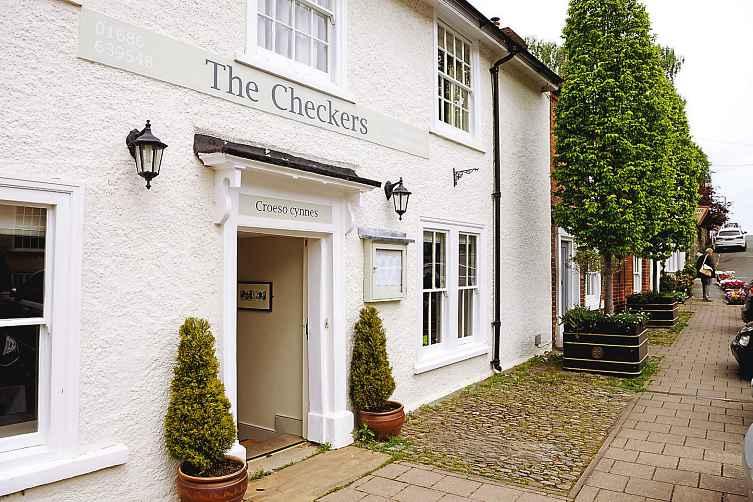

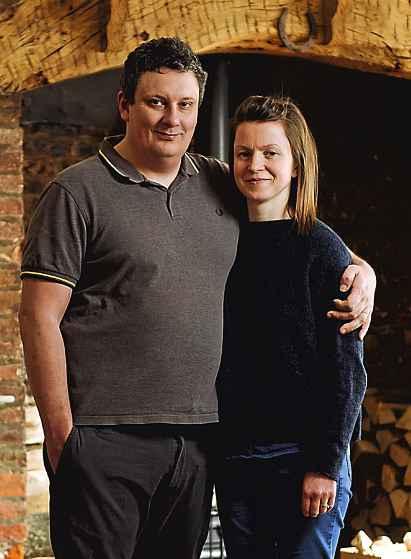
The Checkers, Montgomery, run by Andrew Birch and Rachel Bird (right); inset, warm salted caramel tart at The Checkers.
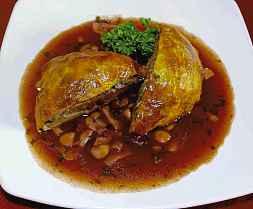
The success of CSons was all down to hard work and strong relationships with great producers.
Reuben said: “Being based in Shropshire, we are surrounded by amazing growers and producers with whom we have built direct relationships. This close link with our suppliers means our menu changes on an almost daily basis in reaction to what is available and at it’s best.
“Our food is different; we use the best, locally sourced produce and treat it with the respect it deserves by creating simple, unpretentious, globally-inspired and exciting dishes that shout about the ingredients, reflect the seasons and are full of flavour.”
There are other restaurants that made great strides in 2022 and that promise much in the year ahead. Old Downton Lodge is foremost among those – and arguably ranks as the best restaurant in Shropshire.
Head Chef Nick Bennett is the best cook that the venue has had, under present owners Willem and Pippa Vlok, whose high standards of service lead the way.
The restaurant has won many awards, notably 3 AA Rosettes since 2015 and a listing in Michelin Guide since 2015. Menus evolve seasonally with an a La Carte as well as a tasting menu.
Dinner is served Monday to Sunday between 6pm and 8.30pm while Afternoon Tea features from Monday to Sunday between 3pm and 5pm.
The return of award-winning chef Andrew Birch has buoyed the local dining scene and he will celebrate his first anniversary as chef-patron at The Checkers, in Montgomery, this spring.
Andrew Birch built his reputation in Ludlow, although he was already an accomplished chef before arriving in the south Shropshire market town.
He’d developed a passion for cooking when he was a schoolboy in Swansea before going on to train in South Wales and then in Stratford-on-Avon.
Andrew worked for the Tanner brothers in the South West for four years and developed a passion for cooking seafood, something he developed further under Michelin-starred chef Kenny Atkinson at his restaurant on the Isle of Scilly.
After working for three years as senior sous chef at the 3 AA rosette and Michelin-starred Montagu Arms, under Matthew Tomkinson, he became head chef at Fishmore Hall, in Ludlow.
There, he achieved three AA rosettes and built his profile by appearing on BBC 2’s Great British Menu.
While the challenges facing restaurants in the coming year ought not to be under-rated, in Shropshire, there are sufficient good operators to ensure that 2023 promises to be a vintage year for food and drink.
The Plough, at Allscott
Beef Wellington, one of the dishes at Basil’s Restaurant and Bistro, above.
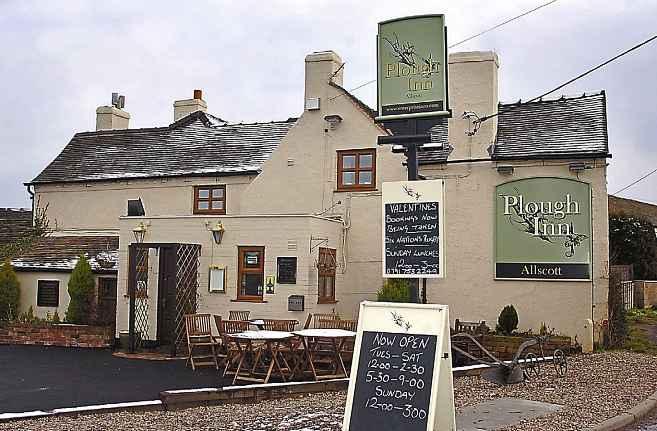
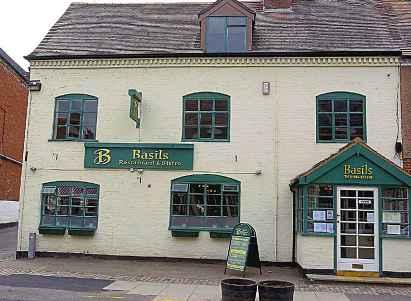
CLASSY COCKTAILS TO MAKE AT HOME
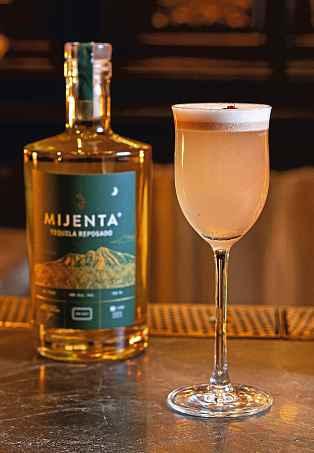

THESE SNAZZY SERVES HAVE CELEBRATION WRITTEN ALL OVER THEM, SAYS SAM WYLIE-HARRIS
If you’re feeling the squeeze with the cost of living crisis, raising a glass this New Year with a delicious home-made cocktail offers a taste of the high life – and feel good drinking ritual with the look of luxe.
As Alessandro Palazzi, head bartender at Dukes Bar, London, puts it: “During lockdown, so many people were making their own cocktails at home – and the beauty of it was people really came to appreciate classic cocktails, which has continued.”
He says the result is people are really proud to show their friends and family cocktails they can make at home. “And to share the moment with them, which is what the holiday season is perfect for,” says Palazzi.
Ready to get the party started? These festive serves have New Year written all over them… Mijenta Tequila Reposado Pink Polka Dots
Winter Applause
This crafty take on a mint julep has been winterised to highlight the whisky’s fruity finish.
Ingredients: 45ml Johnnie Walker Black Label Scotch Whisky (£19.99, 70cl, Amazon), 30ml pomegranate juice, 15/20ml honey syrup, 2 dashes orange bitters, 10ml lemon juice. Fresh mint and pomegranate seeds to garnish.
Method: Half fill a cocktail shaker with ice, add ingredients and shake vigorously. Pour into a julep or highball glass filled with crushed ice and 4 to 5 mint leaves. Garnish with fresh mint and pomegranate seeds. Mermaid Gin Gingerbread Martini With a dash of syrup – such as Monin gingerbread with warming spicy notes – and zesty peppery notes of this Isle of Wight gin, it’s a seaside rollercoaster of flavour.
Ingredients: 50ml Mermaid Gin (£39.90, 70cl, Isle of Wight Distillery), 25ml red vermouth, 10ml amaretto, 10ml festive syrup, crushed gingerbread to rim glass.
Method: Half fill a cocktail shaker
with ice. Add ingredients, shake vigorously, strain into a chilled martini glass and garnish with gingerbread rim. To garnish: Crush gingerbread finely, dip martini rim in festive syrup and dip in crushed gingerbread. A jewel from Jalisco, Mijenta Reposado is aged in a combination of American oak, French oak and French acacia casks for up to six months – the result is an exquisite slow sipping tequila with layers of honeyed vanilla, vegetal agave, and nutty wood. Ingredients: 45ml Mijenta Tequila Reposado (£63.95, 70cl, Master of Malt), 25ml cranberry syrup, 25ml lemon juice, 25ml maraschino liqueur. Method: Half fill a cocktail shaker with ice. Add ingredients, shake vigorously and strain into a Nick and Nora glass. Garnish with pink peppercorns. The Dukes Martini Alessandro Palazzi, head After a deliciously decadent bartender at Dukes Hotel. drink to impress your loved ones? It has to be the classic Dukes Martini, says Palazzi. “A drink to truly sip and enjoy over the holidays.” Especially with this resplendent Crown Jewel serve using the sister gin to Beefeater – with marked depth at 50% strength and addition of grapefruit among the botanicals. Ingredients: 100ml Beefeater Crown Jewel London Dry Gin (£55.95, 70cl, The Whisky Exchange), 2. 5ml dry vermouth, organic Amalfi lemon to garnish. Method: Chill your martini glass and discard any water. Pour vermouth into the chilled glass, stirring the liquid in. Palazzi says if you like a dry martini: “Discard the vermouth – it will have stuck to the sides of the chilled glass.” If you like a wet martini, leave it in the glass. Top up with frozen gin. Peel an unwaxed organic lemon, squeeze the peel over the glass to extract the oil and place the peel in the glass.
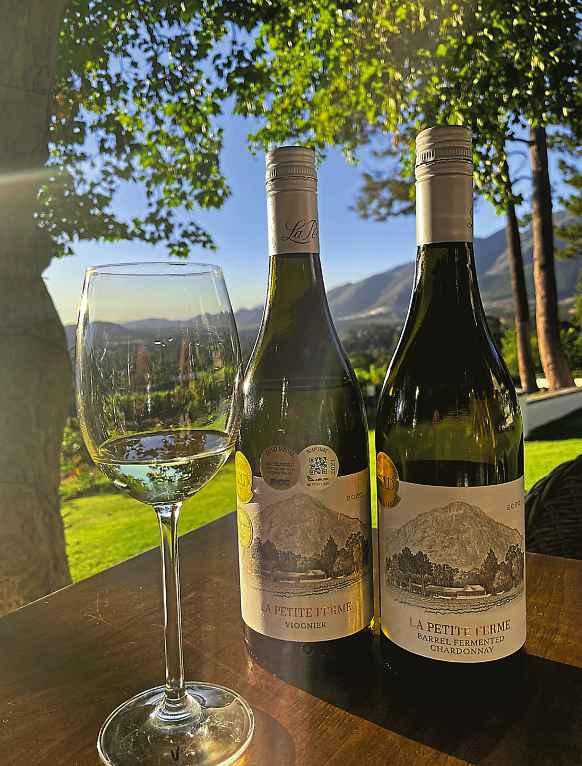

FINDING VALUE IN THE WORLD OF WINE
BY CHRISTINA ALBON, MARKETING MANAGER AT TANNERS
For many years, wine drinkers have focused on wellknown regions to fill their glasses. The likes of Rioja, Chablis, Sancerre and Chianti have become household names, but this can often mean these bottles are bought on name alone rather than on the basis of real quality.
With the cost of living continuing to rise, its wo out lesser-known regions and countries to find valu you enjoy the crisp, mineral, freshness of a Sancerr aren’t so keen on the price tag, look further down t Loire Valley to Touraine, where Philippe and Véron Trotignon are making wonderful gooseberry-led Sauvignon Blanc with that classic ‘Sancerre-like’ m edge from their Touraine Sauvignon Blanc, Les Sil
Hugely popular in the UK, the quality, style an price of Rioja can vary wildly. With 600 wineries an close to 15,000 grape growers in the region, there lity. orth seeking ue. If re but the nique mineral
lex. nd nd

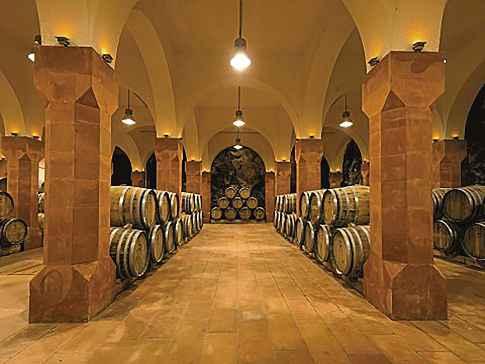
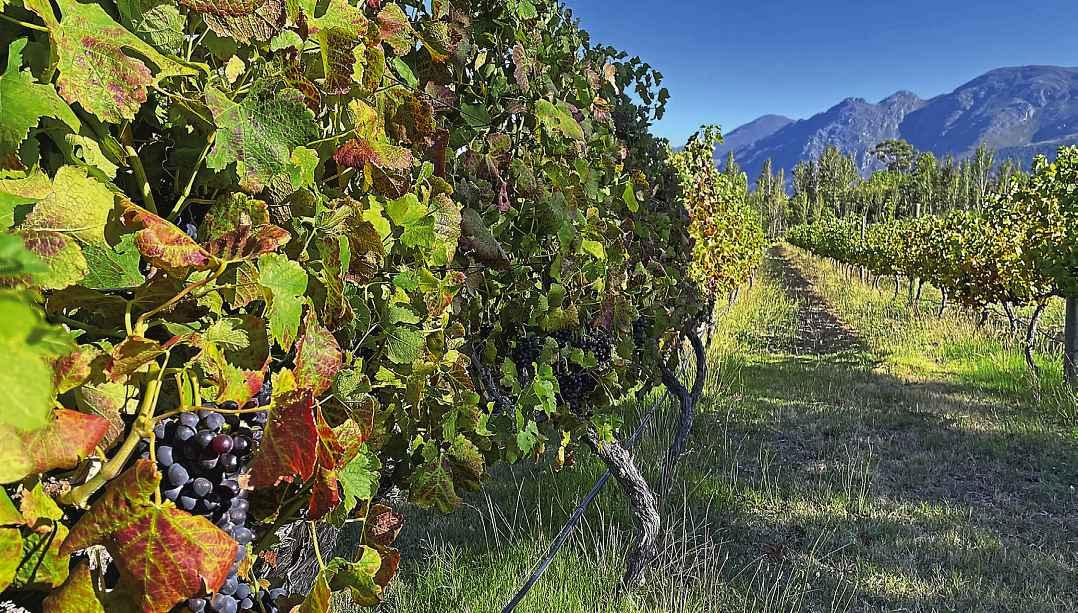

MAIN IMAGES, CLOCKWISE FROM TOP LEFT: La Petite Ferme Viognier and Chardonnay; vines in Portugal’s Duorum Valley; Franshhoek vineyard in the Western Cape Province, South Africa, produces excellent Chardonnay; Yerevan winery, Armenia.
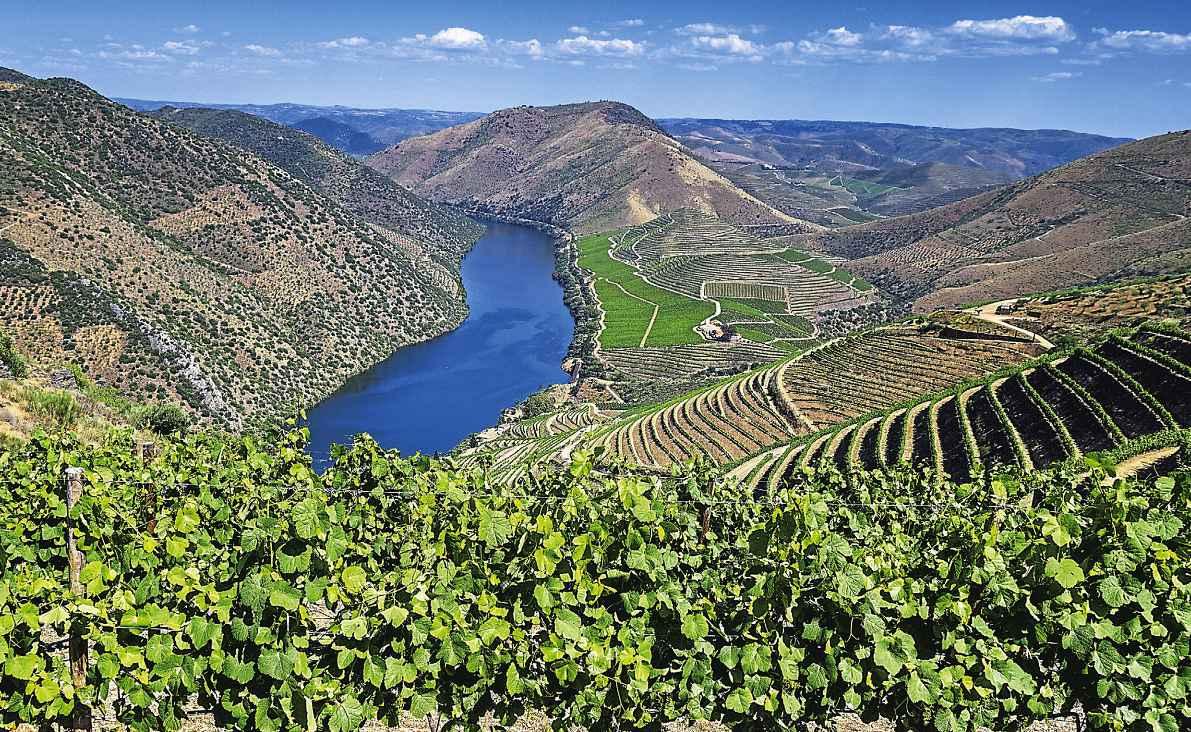
are certainly plenty of quality-minded growers out there to choose from. However, if you are willing to look a lit ttle further south in Spain, a real gem can be found in Tann ners Spanish Reserva. This is from an area to the south of Madrid, known as La Mancha, and is made in a classic Riojan style. Jancis Robinson (www.jancisrobinson.com m), the doyenne of British wine writers, recently tasted it an nd commented: “Great price! Lovely vanilla nose. Round and mature with great, well-balanced fruit. Not that comple ex but VGV.” [Very Good Value].
Her high recommendation is quite the seal of appro oval!
Chablis is an interesting region, so many people, ev ven those that drink it religiously, don’t realise that it is Chardonnay. 100% Chardonnay, 100% of the time!
Very often Chablis is unoaked, which is why it doesn’t have that obvious, heady Chardonnay taste and smell. So, now you know it’s an unoaked Chardonnay, there are plenty of other regions and countries to peruse. Domaine Grauzan Chardonnay is from one of the best value regions in France – LanguedocRoussillon – and is full of peachy, honeyed fruit along with a crisp edge. Don’t overlook the New World for this style, they have learned from past mistakes of cheaply oaked, slapin-the-face wines; something like Baboon Rock Unwooded Chardonnay from Franschoek in South Africa hits the mark, with lemon and lime freshness and a mineral touch.
The wines of Italy have become increasing popular in recent years and the wines made predominantly from Sangiovese, such as Chianti, have become especially popular for their juicy, ripe cherry fruitiness. Tuscany is undoubtedly the home of Sangiovese, it’s a grape variety that suits the central-Italian climate. So, to find the value here, look east to Umbria. It’s a region that isn’t so well known, yet stylistically makes wines that have broadly similar traits to its flashier sibling, Tuscany. Amanti del Vino Sangiovese is great value, leaving you with enough change from a ten-pound note for a cup of coffee.
Moving beyond the classic regions of Europe, there are plenty of off-the-radar countries that make excellent wines, at a snip of the cost of those from the more famous regions.
Por rtugal is a winemaker’s dream, boasting a warm, dry climate e with plentiful breeze. It’s a country that so often gets overlo ooked in favour of its more illustrious neighbour, Spain, but th here is more to this holiday hotspot than the fortified festive e-favourite, Port. Whilst the steep slopes of the Douro
Valley y give the ideal growing conditions for Port grapes, these grapes can also turn out some remarkable table wines, too. The reds a are very good, think Tanners Douro, but the whites never fail to o delight. Despite the warm climate they are aromatic, full of bright, refreshing acidity and packed with stone fruits, Tons de Du uorum Branco really hits the spot. Best of all, the prices still refl flect this being an overlooked region.
Without doubt one of Tanners biggest selling ranges is Paparuda from Romania. They are all made in a smart, sleek, state-of-the-art winery using well-known grape va ari ieti ies, such as Pinot Grigio, Chardonnay and Merlot. For easy, , everyday drinking, this range can ’t be beaten. In fact, many e eastern European countries have a long history of wine ma aking, yet have only recently made it to the UK shores.
Armenia and Georgia both claim to be the olde est wine-producing countries in the world. Both make e very appealing, drinkable wines from their local indigen nous grape varieties. Stylistically, these are unique wines s, Yerevan Winemaker Red Blend (Armenia) is a grea at example. You won’t be familiar with the grape varieties (Areni and Karmrayhut), and we certainly weren’t prior to listing the wine. The Guardian wine write er Fiona Beckett agrees that this is a charming red for r the winter months: “Gorgeous, exotic red that’s richer r than you’d guess from its ABV. Think slow-cooked shoulder of lamb.” The Guardian, October 29, 2022.
From Georgia, Winery Khareba Saperavi (Georgia’s indigenous grape variety), is a dry red boasting sweet damson fruit and ripe tannins.
Whatever your usual drinking habits, we implore you to search further afield, look to those regions and countries you usually walk past – they may very well offer you a delicious wine at an even more desirable price.







